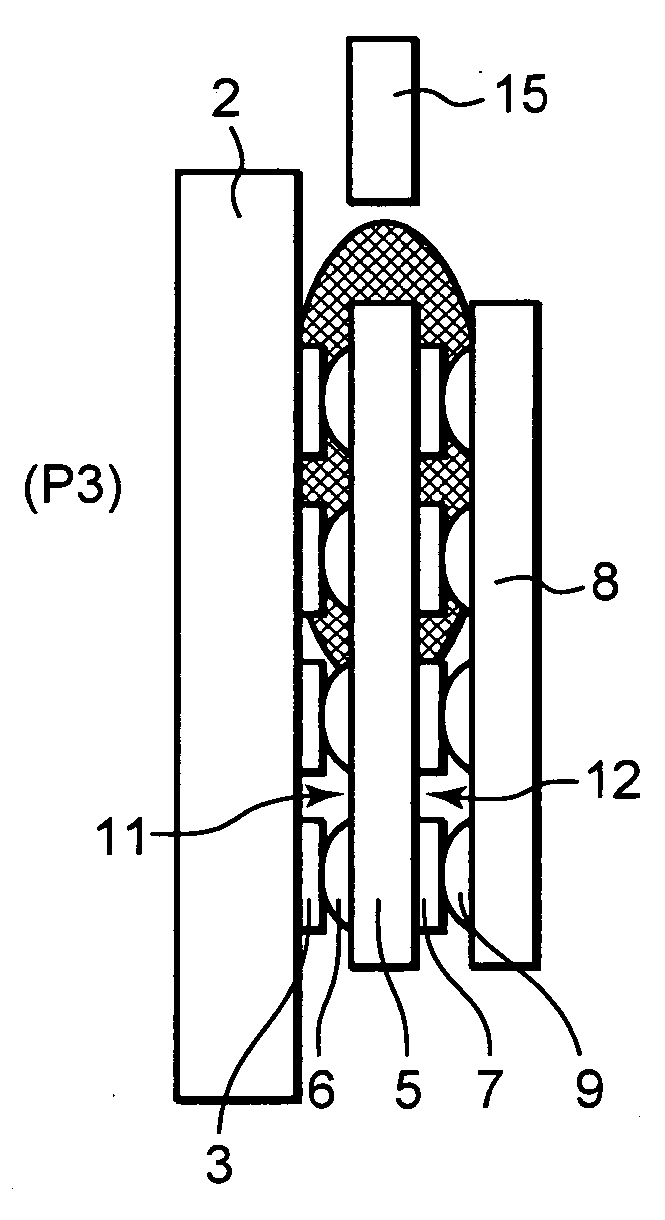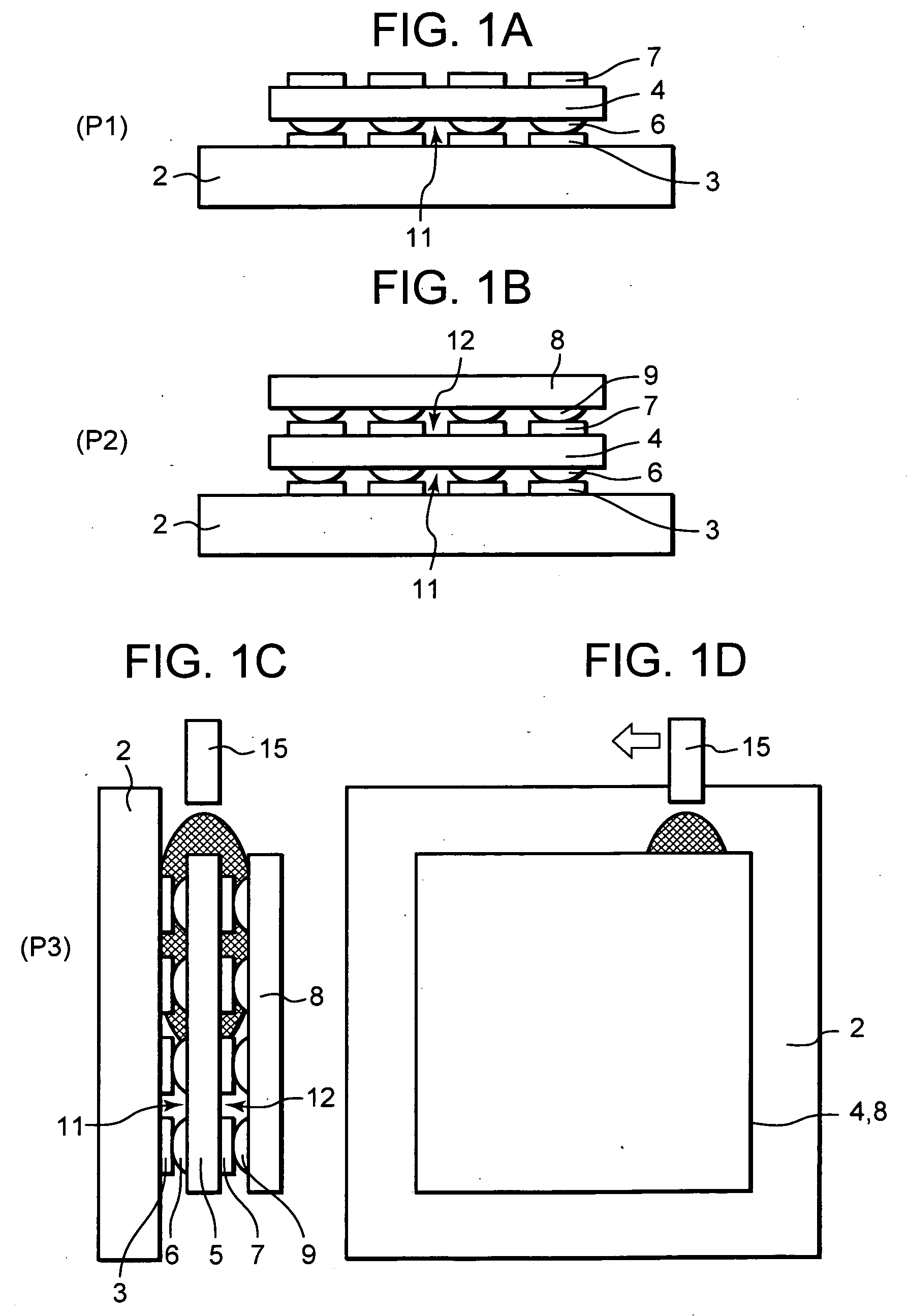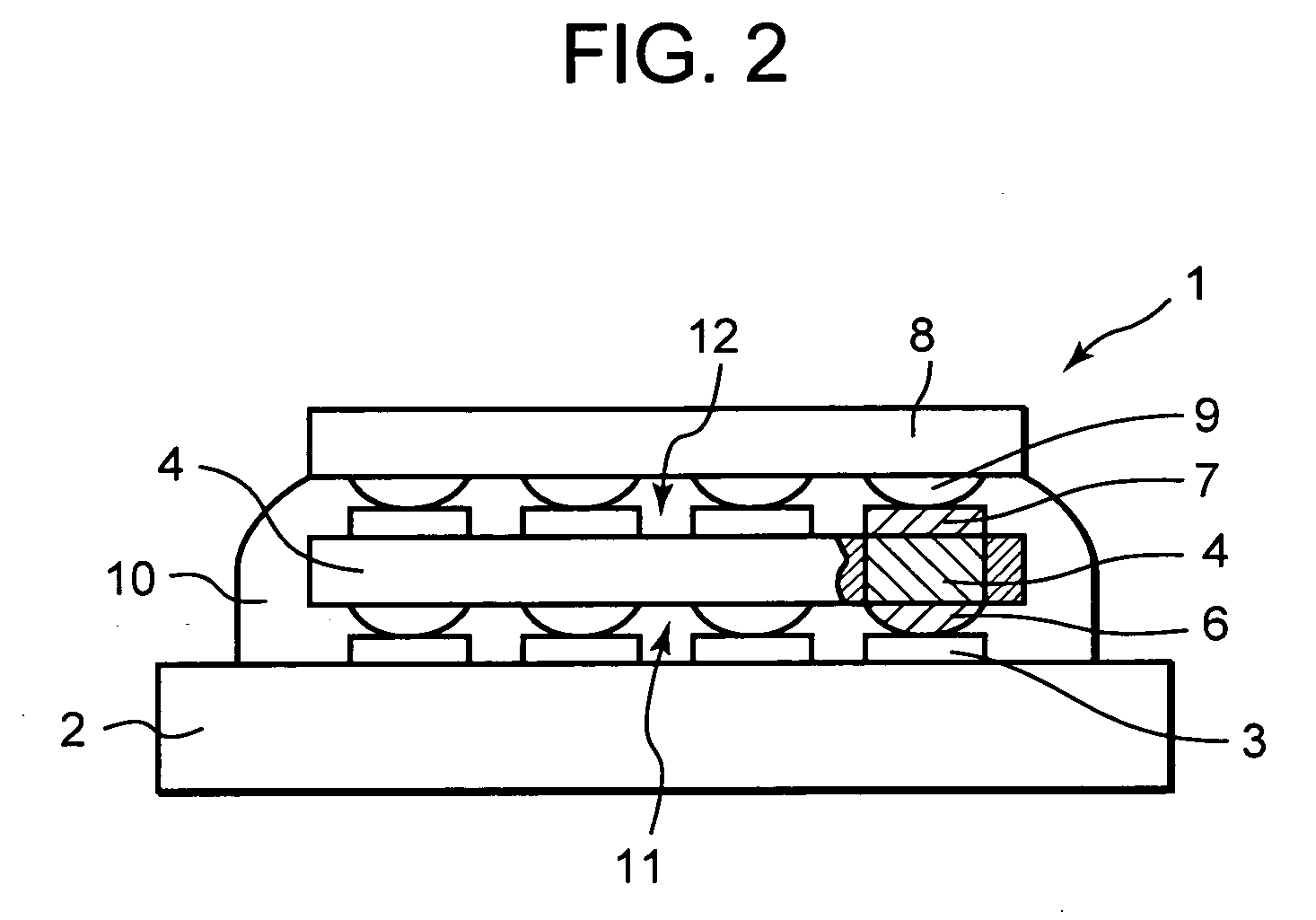Method for manufacturing a semiconductor device
a manufacturing method and semiconductor technology, applied in the direction of semiconductor devices, basic electric elements, electrical appliances, etc., can solve the problems of electrode or the like corrosion, and the junction between the electrodes breaking
- Summary
- Abstract
- Description
- Claims
- Application Information
AI Technical Summary
Benefits of technology
Problems solved by technology
Method used
Image
Examples
first preferred embodiment
[0023]FIG. 1 is an explanatory diagram showing a process for manufacturing a semiconductor device according to a first embodiment, and FIG. 2 is an explanatory diagram illustrating the semiconductor device according to the first embodiment, respectively.
[0024] In FIG. 2, reference numeral 1 indicates the semiconductor device. The present embodiment shows a semiconductor device formed by stacking semiconductor elements on a substrate in two stages.
[0025] Reference numeral 2 indicates the substrate, which is of a circuit substrate or a semiconductor element or the like. The substrate is provided with a plurality of ball pads 3 whose surfaces are plated with nickel or the like.
[0026] Reference numeral 4 indicates a first semiconductor element, which is a substantially square semiconductor element disposed in an intermediate stage. The first semiconductor element is provided with bumps 6 formed by fusion-bonding solder or the like to ends on the front-face (corresponding to a surface...
second preferred embodiment
[0045]FIG. 3 is an explanatory diagram showing a process for manufacturing a semiconductor device according to a second embodiment.
[0046] Incidentally, portions similar to those employed in the first embodiment are given the same reference numerals and their explanations are omitted.
[0047] The semiconductor device 1 according to the present embodiment is similar to the first embodiment. A nozzle 15 is also similar in configuration to that employed in the first embodiment.
[0048] A method for manufacturing the semiconductor device according to the present embodiment in accordance with processes indicated by PA will be explained below using FIG. 3.
[0049] Since the processes PA1 and PA2 of the present embodiment are similar to the processes P1 and P2 of the first embodiment, their explanations are omitted.
[0050] In the process PA3, a first semiconductor element 4 and a second semiconductor element 8 are bonded onto and stacked over a substrate 2 and formed in two stages. In such a ...
third preferred embodiment
[0057]FIG. 4 is an explanatory diagram showing a process-1 (part 1) for manufacturing a semiconductor device according to a third embodiment, and FIG. 5 is an explanatory diagram showing a process-2 (part 2) for manufacturing the semiconductor device according to the third embodiment, respectively.
[0058] Incidentally, portions similar to those employed in the first embodiment are given the same reference numerals, and their explanations are omitted.
[0059] The semiconductor device 1 according to the present embodiment is similar to that according to the first embodiment. A nozzle 15 is similar in configuration to that employed in the second embodiment.
[0060] In FIG. 4, reference numerals 20 indicate dam members, which are bank-shaped members for preventing an outflow of an underfill agent due to the extrusion of the underfill agent in the process of injecting the underfill agent. The dam members are formed by horizontally disposing a substrate 2 in a state in which first and secon...
PUM
 Login to View More
Login to View More Abstract
Description
Claims
Application Information
 Login to View More
Login to View More - R&D
- Intellectual Property
- Life Sciences
- Materials
- Tech Scout
- Unparalleled Data Quality
- Higher Quality Content
- 60% Fewer Hallucinations
Browse by: Latest US Patents, China's latest patents, Technical Efficacy Thesaurus, Application Domain, Technology Topic, Popular Technical Reports.
© 2025 PatSnap. All rights reserved.Legal|Privacy policy|Modern Slavery Act Transparency Statement|Sitemap|About US| Contact US: help@patsnap.com



